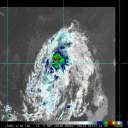Show Selection:
|
#900652 (Received by flhurricane at: 10:59 PM 29.Aug.2017)
TCDAT4
Tropical Storm Harvey Discussion Number 39
NWS National Hurricane Center Miami FL AL092017
1000 PM CDT Tue Aug 29 2017
Latest radar imagery shows that heavy rainfall continues over
far eastern Texas and southwestern Louisiana. Outer bands are also
producing heavy rain farther east along portions of the northern
Gulf coast. However, rains have begun to diminish over the Greater
Houston area, where some locations have received more than 50 inches
during this historic event.
Harvey took an eastward jog this evening, but recent satellite
images suggest that a northeastward motion has resumed. The storm
is expected to move north-northeastward to northeastward between a
ridge over the eastern Gulf of Mexico and a trough over the
east-central United States. This motion should bring the center
onshore over southwestern Louisiana early Wednesday, and into the
Tennessee Valley region later this week. The global models
show the system becoming an open trough near the Ohio Valley or
Appalachians in 4 to 5 days. The latest NHC track forecast has
been shifted eastward partially due to the more eastward initial
position.
There has been little overall change to Harvey's convective
structure since the previous advisory, and the initial intensity
remains 45 kt, which was supported by the earlier aircraft data.
Little change in strength is anticipate before Harvey reaches the
Louisiana coast. After that time, gradual weakening should occur
while Harvey moves farther inland.
The latest forecast required an extension of the tropical storm
warning eastward to Grand Isle, Louisiana.
Key Messages:
1. Ongoing catastrophic and life-threatening flooding will continue
across southeastern Texas. Additional rainfall accumulations of 6
to 12 inches are expected to the north and east of Houston from far
east Texas into southwestern Louisiana. Isolated storm totals have
reached 50 inches over the upper Texas coast, including the
Houston/Galveston metropolitan area. Please heed the advice of
local officials. Do not attempt to travel if you are in a safe
place, and do not drive into flooded roadways. Refer to products
from your local National Weather Service office and the NOAA Weather
Prediction Center for more information on the flooding hazard. A
summary of rainfall totals compiled by the Weather Prediction Center
can be found at: www.wpc.ncep.noaa.gov/discussions/nfdscc1.html
2. The flood threat has spread farther east, and additional rainfall
amounts of 5 to 10 inches are expected in southern Louisiana into
coastal Mississippi and Alabama. These rains will spread north by
mid to late week, with rainfall amounts of 4 to 8 inches in portions
of Arkansas and the Tennessee Valley. Please heed the advice of
local officials and refer to products from your local National
Weather Service office and the NOAA Weather Prediction Center for
more information on the flooding hazard in these areas.
FORECAST POSITIONS AND MAX WINDS
INIT 30/0300Z 29.0N 93.6W 45 KT 50 MPH
12H 30/1200Z 29.8N 93.0W 40 KT 45 MPH...INLAND
24H 31/0000Z 31.1N 92.3W 30 KT 35 MPH...INLAND
36H 31/1200Z 32.5N 91.2W 30 KT 35 MPH...INLAND
48H 01/0000Z 34.3N 89.5W 25 KT 30 MPH...INLAND
72H 02/0000Z 36.8N 85.9W 25 KT 30 MPH...POST-TROP/INLAND
96H 03/0000Z 39.0N 81.5W 20 KT 25 MPH...POST-TROP/INLAND
120H 04/0000Z...DISSIPATED
$$
Forecaster Brown |



